Planes and Fires
04/06/12 04:09
After World War II, there was a brief surplus of pilots in the Untied States. The efforts to train crews for service in Europe and the Pacific had produced a lot of pilots. These pilots came home with their lives changed by the war and many sought different jobs and career paths than their parents. Some, like my father who had been an instructor pilot and service pilot, based in California, were determined to make aviation their life. My parents set up operations in Big Timber, Montana, just north of Yellowstone National Park, a short flight from the Gallatin National Forest. They envisioned that they could earn their living from airport operations, fuel and mechanical services to other pilots, charter work, air ambulance, agricultural chemical spraying and other aviation services. Important to their operation were contracts earned with the Forest Service and the National Park Service. They used light aircraft to fly into the mountains to spot forest fires. After a night of thundershowers, dad would be in the air before 6 a.m., flying around the high country in search of smoke plumes.
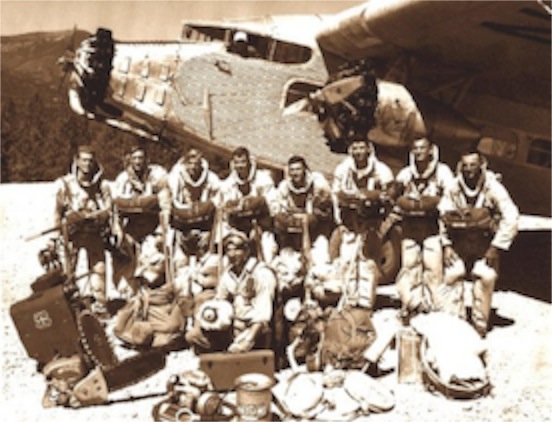 Our operation wasn’t as large as Johnson Brothers Flying Service, based in Missoula, Montana. It was over in Missoula where a lot of innovation in airborne fire fighting took place. It was from there that the first smokejumpers parachuted to serve as ground crews in remote locations. Before long, there were air tankers dropping water and retardant on fires. In those days, the air tankers were World War II bombers, purchased from a bone yard in Arizona, retrofitted with equipment and flown by private contractors.
Our operation wasn’t as large as Johnson Brothers Flying Service, based in Missoula, Montana. It was over in Missoula where a lot of innovation in airborne fire fighting took place. It was from there that the first smokejumpers parachuted to serve as ground crews in remote locations. Before long, there were air tankers dropping water and retardant on fires. In those days, the air tankers were World War II bombers, purchased from a bone yard in Arizona, retrofitted with equipment and flown by private contractors.
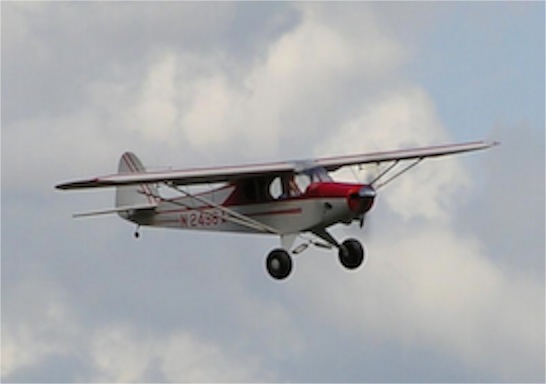 I was a kid growing up around airplanes in those days. Occasionally, I got a ride in one of them. I’ve flown fire patrol with my dad in a Piper Super Cub. I got a ride in a Ford Tri-motor that was used to carry smokejumpers. And I watched a lot of ground operations as tankers were filled, fueled and headed out to fight fires. At one point in my life I thought that I might pursue such a career. I couldn’t pass the eye test to become a smokejumper. I was called in a different direction. But I have kept up watching the skies and paying attention to the operations of the aerial firefighters.
I was a kid growing up around airplanes in those days. Occasionally, I got a ride in one of them. I’ve flown fire patrol with my dad in a Piper Super Cub. I got a ride in a Ford Tri-motor that was used to carry smokejumpers. And I watched a lot of ground operations as tankers were filled, fueled and headed out to fight fires. At one point in my life I thought that I might pursue such a career. I couldn’t pass the eye test to become a smokejumper. I was called in a different direction. But I have kept up watching the skies and paying attention to the operations of the aerial firefighters.
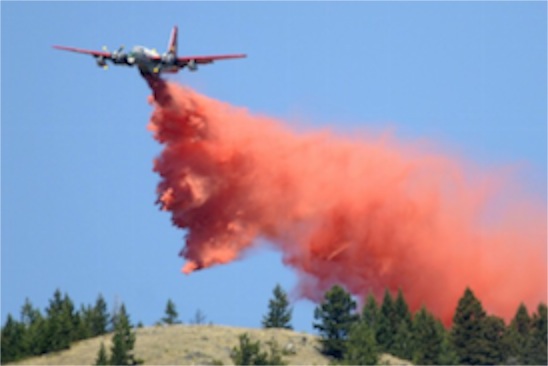 I am saddened to read this morning that a P-2V, owned by Neptune Aviation Services of Missoula, Montana, crashed yesterday while fighting a 5,000-acre blaze along the Nevada-Utah border. Two crewmembers were killed in the accident. The P-2 was originally developed in the 1940’s for use by the Navy. The version flown by Neptune was a more recent model, but it was likely nearing 50 years old. They are tough old birds, and the Forest Service has a rigorous inspection program designed to assure that any planes used in such operations are safe.
I am saddened to read this morning that a P-2V, owned by Neptune Aviation Services of Missoula, Montana, crashed yesterday while fighting a 5,000-acre blaze along the Nevada-Utah border. Two crewmembers were killed in the accident. The P-2 was originally developed in the 1940’s for use by the Navy. The version flown by Neptune was a more recent model, but it was likely nearing 50 years old. They are tough old birds, and the Forest Service has a rigorous inspection program designed to assure that any planes used in such operations are safe.
But accidents happen.
Fires also happen. And we are seeing more frequent and larger fires in recent years. Whether or not they are caused by a change in global weather patterns, it is clear that the fires are becoming larger and more dangerous. Already this year, wildfires have burned over 700,000 acres in the US. The Whitewater-Baldy Fire in New Mexico has already spread to an area bigger than Dallas, Texas. It has consumed dozens of homes and is only 15% contained. The fire could burn for weeks, or even months in the tinder-dry conditions.
And there are not enough aircraft in the firefighting fleet to handle the blazes currently burning.
In 2002 a tanker crashed in California, killing 3. Stress cracks in the main wing spar were blamed for the accident. Then in 2004, there were two more planes lost. The entire fleet was grounded for inspections. A plan was developed to replace the aging fleet. Neptune has been planning since then to replace its P-2’s with BAe-146 aircraft. But at $7 million to $8 million per airplane such a move is financially challenging, if not impossible.
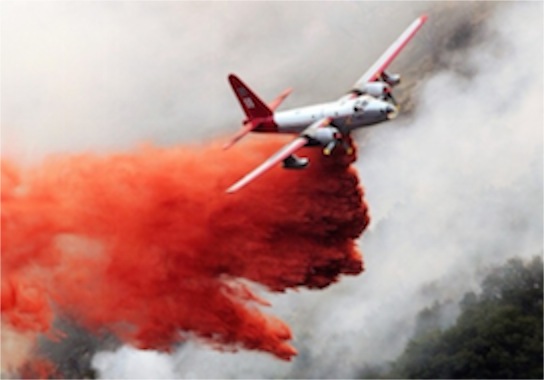 In 2006, there were 44 heavy air tankers available for firefighting operations in the West. Yesterday there were 11. Today there are 10, if they don’t decide to ground the P-2’s and P-3’s. The fires are going to get bigger while the Forest Service and its private contractors figure out what to do.
In 2006, there were 44 heavy air tankers available for firefighting operations in the West. Yesterday there were 11. Today there are 10, if they don’t decide to ground the P-2’s and P-3’s. The fires are going to get bigger while the Forest Service and its private contractors figure out what to do.
There are possibilities for the fleet to include both bigger and smaller airplanes. The P-2 that crashed yesterday carried just over 2,300 gallons of retardant. It was classified as a medium tanker. Smaller airplanes, originally designed for agricultural operations can take up some of the slack. The Air Tractor AT comes in two versions. One carries 807 gallons, the other a thousand. We’ve seen air tractors used in fire operations in the Black Hills National Forest.
On the other end of the spectrum, 10 Tanker Air Carrier has flown nearly 400 missions on fires with a modified DC-10 jet that carries 12,000 gallons. Evergreen Air has one 747 supertanker that carries 20,500 gallons. These heavy aircraft are incredibly expensive to own and operate. There is some speculation that they simply are too expensive to be practical.
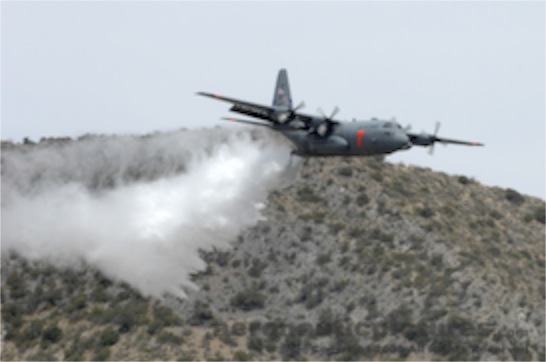 For this fire season, however, the options for the Forest Service are very limited. There simply are not enough aircraft. It can take years to come up with financing and after that months and months to perform inspections and prepare aircraft for their role in fighting fires. There are a few National Guard MAFFS units in the west that have C-130 Hercules tankers capable of carrying 3,000 gallons. They will need to be called into firefighting service this year.
For this fire season, however, the options for the Forest Service are very limited. There simply are not enough aircraft. It can take years to come up with financing and after that months and months to perform inspections and prepare aircraft for their role in fighting fires. There are a few National Guard MAFFS units in the west that have C-130 Hercules tankers capable of carrying 3,000 gallons. They will need to be called into firefighting service this year.
I used to be able to tell you what kind of airplane was being used by the sound of its engines. But those days are past. I can still identify a P-2 or P-3 with a combination of sound and sight. And I recognize the Air Tractor; though have to see one to know if it is being used for firefighting. So I’ll be watching and listening as the summer progresses. In the west, it is not a matter of “if” we will have a fire, just a matter of “when.”
As I look up, I’ll keep sniffing the air for smoke. And I’ll pray for the crews who risk their lives daily to protect homes from the fires.



But accidents happen.
Fires also happen. And we are seeing more frequent and larger fires in recent years. Whether or not they are caused by a change in global weather patterns, it is clear that the fires are becoming larger and more dangerous. Already this year, wildfires have burned over 700,000 acres in the US. The Whitewater-Baldy Fire in New Mexico has already spread to an area bigger than Dallas, Texas. It has consumed dozens of homes and is only 15% contained. The fire could burn for weeks, or even months in the tinder-dry conditions.
And there are not enough aircraft in the firefighting fleet to handle the blazes currently burning.
In 2002 a tanker crashed in California, killing 3. Stress cracks in the main wing spar were blamed for the accident. Then in 2004, there were two more planes lost. The entire fleet was grounded for inspections. A plan was developed to replace the aging fleet. Neptune has been planning since then to replace its P-2’s with BAe-146 aircraft. But at $7 million to $8 million per airplane such a move is financially challenging, if not impossible.

There are possibilities for the fleet to include both bigger and smaller airplanes. The P-2 that crashed yesterday carried just over 2,300 gallons of retardant. It was classified as a medium tanker. Smaller airplanes, originally designed for agricultural operations can take up some of the slack. The Air Tractor AT comes in two versions. One carries 807 gallons, the other a thousand. We’ve seen air tractors used in fire operations in the Black Hills National Forest.
On the other end of the spectrum, 10 Tanker Air Carrier has flown nearly 400 missions on fires with a modified DC-10 jet that carries 12,000 gallons. Evergreen Air has one 747 supertanker that carries 20,500 gallons. These heavy aircraft are incredibly expensive to own and operate. There is some speculation that they simply are too expensive to be practical.

I used to be able to tell you what kind of airplane was being used by the sound of its engines. But those days are past. I can still identify a P-2 or P-3 with a combination of sound and sight. And I recognize the Air Tractor; though have to see one to know if it is being used for firefighting. So I’ll be watching and listening as the summer progresses. In the west, it is not a matter of “if” we will have a fire, just a matter of “when.”
As I look up, I’ll keep sniffing the air for smoke. And I’ll pray for the crews who risk their lives daily to protect homes from the fires.